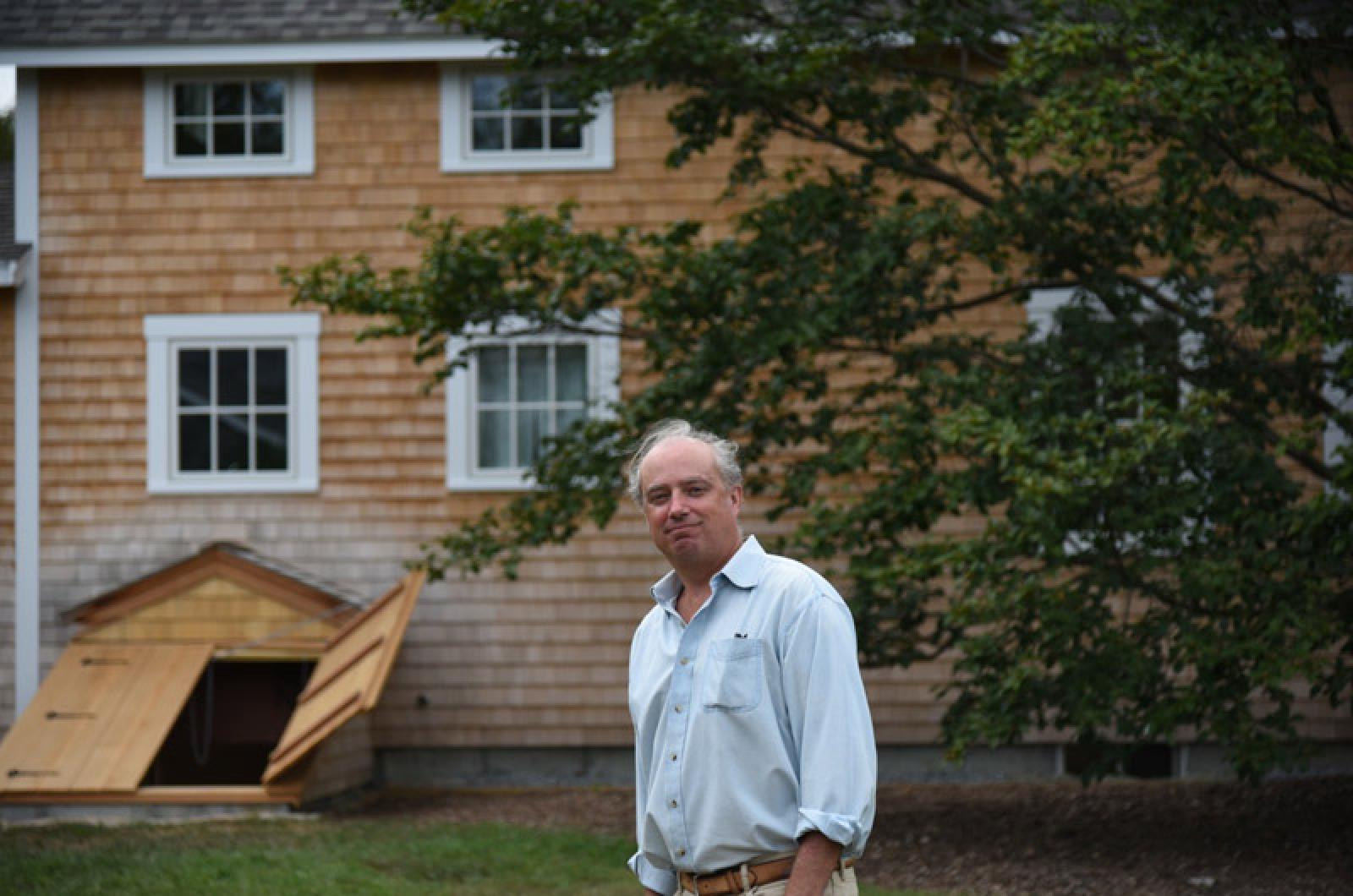With the opening of a new education center and botany lab, the Polly Hill Arboretum is hoping to become the leader in plant science and conservation on the Island.
On a recent afternoon, Tucker Hubbel of Rising Sun Construction stood on a ladder in the new center’s classroom, hanging a projector screen, while electrician Bob Loy dealt with a tangle of wires coming down from the ceiling. The first students have yet to arrive, but staff members have begun transferring an extensive library of dried plant specimens into the building, which joins several others on the 60-acre property in West Tisbury. A quiet ceremony on August 19 allowed summer residents and donors to celebrate the building’s completion a year after construction began.
The idea for the building first emerged more than a decade ago as the arboretum began to focus more on education. The building replaces an old barn known as the Gym, and will allow for expanded and year-round educational programming, along with climate-controlled storage space and a new laboratory.
Until now, the lack of heating in a 19th-century barn known as the Far Barn has prevented educational programs from continuing past October. The new facility will allow those programs to expand from elementary school to high school with offerings throughout the year. And with more space, lab work will no longer be limited to the winter.
“What we’re trying to do is keep up the momentum of kids learning about plants and the natural world,” Polly Hill executive director Tim Boland said this week. The new building will also allow for more professional training throughout the year.
Mr. Boland opened the door of a cabinet in a small herbarium just off the classroom and pulled out a folder of pressed samples — among the 2,400 the arboretum has mounted since around 2006. The three species of viburnum he showed, along with others, will stay preserved for 200 years in the right conditions. Other samples, including lichens and even algae, will soon fill the remaining six cabinets.
“This part of it is a huge science breakthrough, in terms of our capacity to collect,” Mr. Boland said of the herbarium, noting that there was plenty of room in the basement to expand.
The growing collection of algae samples will help botanists identify species in the harmful algal blooms that plague Island ponds each year. The arboretum has about 180 samples so far, and has turned its attention to modern species discovered in the last few years.
Beyond the herbarium, a new laboratory is waiting for tables and equipment where volunteers will prepare samples from around the Island and around the world. In addition to the climate-controlled herbarium, samples will benefit from a dehydration and freezing process that preserves them and kills any insect eggs. The process will eliminate the use of pesticides, which has been a goal of the arboretum. New samples will add to a database that maps the diversity of plants on the Island and is available to plant researchers. “The work on this flora allows us to take a leadership role in plant science and conservation, particularly plant conservation,” Mr. Boland said. “We kind of want to be the people who do that.”
That was also a vision of the late David Smith, a medical researcher and philanthropist who helped found the arboretum in 1998. Mr. Boland said the new building would not have been possible without private donations and a $500,000 matching grant from Mr. Smith’s Cedar Tree Foundation in Boston.
The second floor of the building will house decades worth of archival material from the collection of Polly Hill, who began developing the arboretum in 1958 — including thousands of photographic slides and hundreds of letters.
With its cedar shingles and modest proportions, the building reflects the traditional New England style of the campus, but without the mold and other issues that often come with old houses. A heat exchange system keeps the building highly energy efficient, and rooftop solar panels will combine with others nearby to supply at least 85 per cent of the arboretum’s electricity.
Further decreasing the project’s environmental footprint, the former barn was deconstructed and 60 per cent of it is in storage waiting to be reused. A former shed was moved to Mermaid Farm and adapted for use as a garden shed. And a 55-year-old Japanese Stewartia tree that Ms. Hill planted herself from a seed was spared any trauma by re-siting the new building six feet farther west. The building occupies slightly more space than the former barn, but will handle a much wider variety of functions. Mr. Boland expects the first students to arrive in the new year.









Comments (1)
Comments
Comment policy »